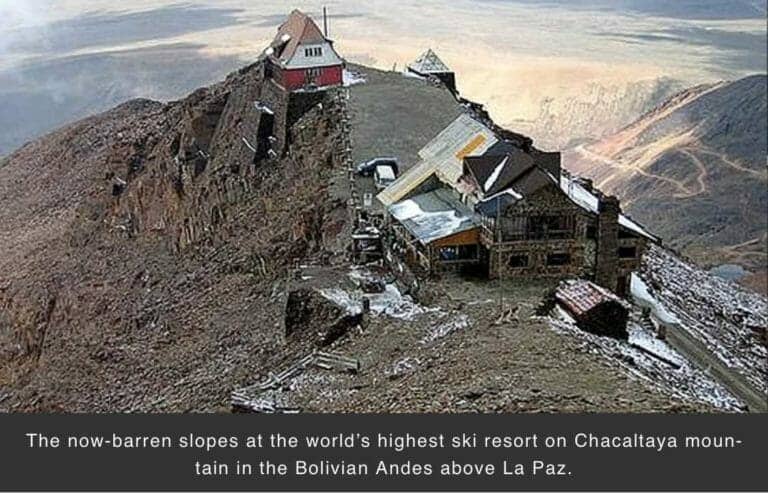Bolivia has declared a state of emergency as climate impacts shrink glaciers and leave cities without water. The now-barren slopes at the world’s highest ski resort on Chacaltaya mountain in the Bolivian Andes above La Paz.
The government of Bolivia, a landlocked country in the heart of South America, has been forced to declare a state of emergency as it faces its worst drought for at least 25 years. Much of the water supply to La Paz, the highest capital city in the world, and the neighbouring El Alto, Bolivia’s second largest city, comes from the glaciers in the surrounding Andean mountains. But the glaciers are now shrinking rapidly, illustrating how climate change is already affecting one of the poorest countries in Latin America.
The armed forces are being brought in to distribute water to the cities… The three main dams that supply La Paz and El Alto are no longer fed by runoff from glaciers and have almost run dry. Water rationing has been introduced in La Paz, and the poor of El Alto − where many are not yet even connected to the mains water supply − have staged protests. The armed forces are being […]
Full article: First the Arctic melted, then the Bolivian water dried up and then…
More about glaciers and water:
Glacier depth affects plankton blooms off Greenland
Interfaith Leaders From Across The World Pledge To Protect Rivers, Glaciers

